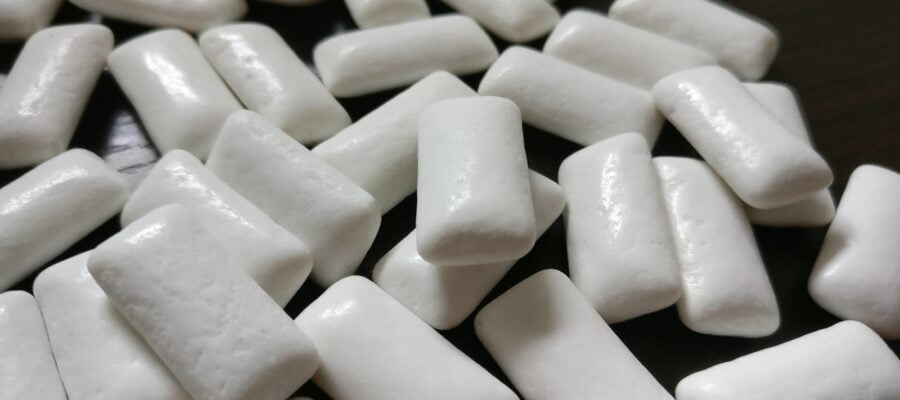Content
Chewing gums are by definition a concentration of chemicals, dyes and preservatives. But among them, one is to be particularly shunned: titanium dioxide.
Update of the article on March 17, 2019
It’s official, March 17, 2019 was announced the ban on the additive E171 in foodstuffs, applicable January 1, 2020, in France. This additive, which is none other than titanium dioxide, is of concern because it is likely to be present in nanoparticulate form, a minute size that gives it special properties and raises questions about its toxicity. A study conducted by INRA (National Institute of Agronomic Research) in 2016 indeed left fears of carcinogenicity of titanium dioxide “nano” by ingestion, fears that manufacturers have not managed to alleviate since they have still not provided evidence of the safety of this additive. Titanium dioxide is also used in cosmetic products, as an anti-UV filter in sunscreens, as a coloring agent in make-up, toothpastes or even in balms and lipsticks. In these last cases, a small amount is likely to be ingested. The exposure of the consumer is therefore similar, even if in lesser proportions, to that from food products. It is in these products that are likely to be ingested that we urge the consumer to be careful.
Titanium dioxide E171
Presence of titanium dioxide (E171)
Titanium dioxide is a colorant used in toothpaste, in UV filters of sunscreens, in paint or in the coating of roads. In food, this dye is widely used, even if it does not add anything, except to make food whiter or brighter.
Toxicity of titanium dioxide (E171)
Titanium dioxide (E171) has been classified as a possible human carcinogen when inhaled. It has been classified as a hazardous substance when absorbed. And the exposure of children would be particularly worrying.
The presence of these nanoparticles “is not prohibited by French and European regulations”. But recent studies show worrying effects for our health (such as the study carried out by the Dutch health institute RIVM which alerts on the risks for the liver, the ovaries and the testicles).
The EFSA has given in to the agri-food lobby and has just re-authorized the additive E171 in September 2016 under the pretext that there is not enough evidence of effects on the health of consumers …
Also some researchers believe that we are in the same situation as with asbestos 40 years ago. They warn about the inflammatory risks (interaction with the oxygen of the cells, alteration of the DNA, death of cells, pro-inflammatory activity on the lungs and the peritoneum, etc.), the way it can cross different physiological barriers (they found some in the blood, the liver, the spleen, the kidneys, the lungs, the heart and the brain of animals) and accumulate in the body without being able to be eliminated because of the very small size of the nanoparticles.
Chewing gum containing titanium dioxide (E171) – before 2020
All brands sold in supermarkets contain titanium dioxide:
- Hollywood,
- Wrigley’s Freedent,
- Mentos,
- Airwaves,
- Stimorol,
- Malabar…
Check the list of ingredients for E171. You will also find it in many candies (M&Ms in particular).
Chewing gum without titanium dioxide (E171)
There are few of them, and they are not on sale everywhere, but you can find them on Amazon (free delivery from 25 euros of purchase).
Classification of the best chewing gum without sugar, and especially without dye / preservative:
- Chewing gum Propolis and mint Apimab Propolia 2×27 dragees for 2.90
- Chicza Lima Bio Gum 12 dragees for 2.30€.
- Bioformule – Plants – Fresh Breath 12 tablets for 6.99€.
